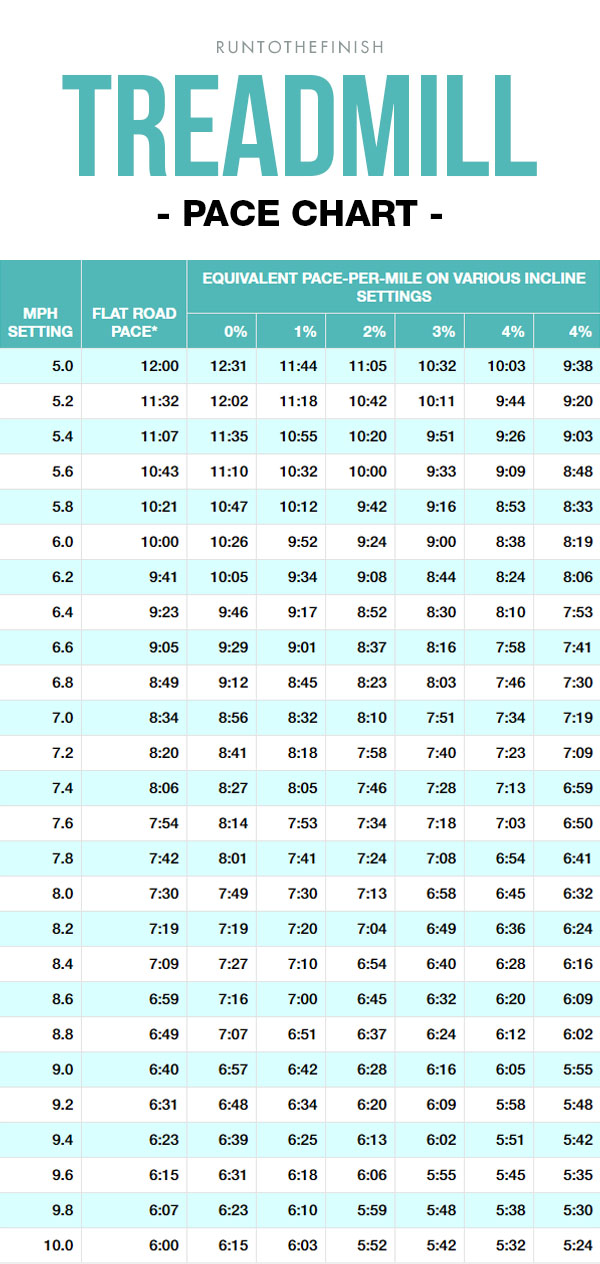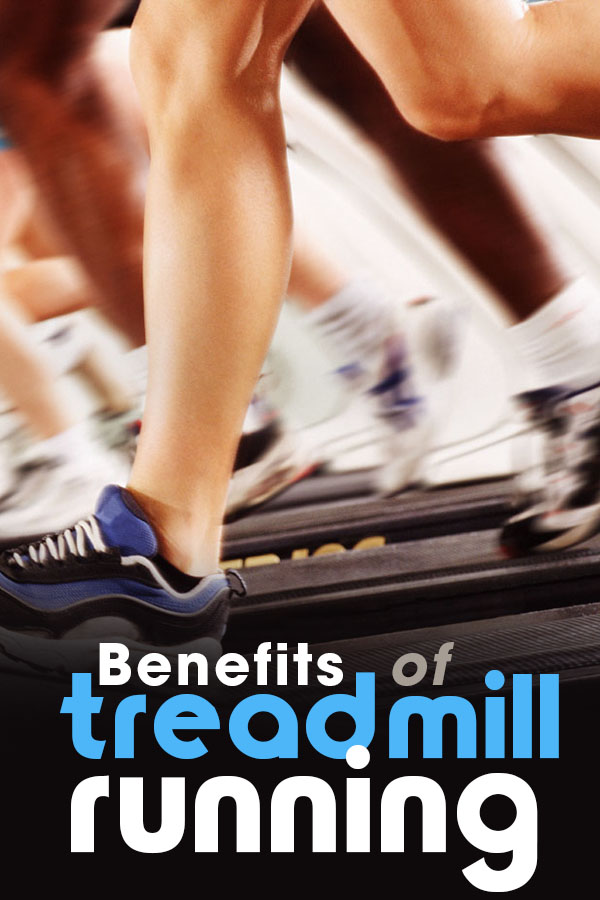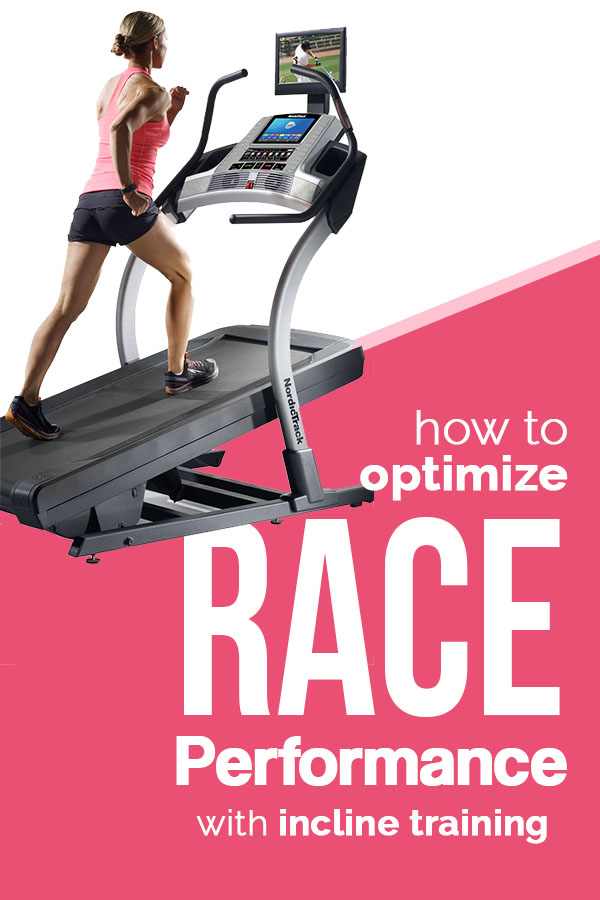Would you like to PR at your next race? Would you be surprised to find out the treadmill might be the tool you’re overlooking to achieve that goal? The benefits of treadmill running are vast and overlooked because we think that running outside is better.
I know some of you immediately grimaced and the word “dreadmill “came to mind, but there are a few crazy runner ladies like myself who have found it truly helpful in goal achievement.
I want to help you reframe that thinking because sometimes you’re going to end up inside to avoid running on ice or running long distances in the crazy heat and humidity.
STOP CALLING IT NAMES, that’s never going to help you enjoy it.
You might as well have a good attitude about it to make the most of your time!
Benefits of Treadmill Running
Let’s start with why you might want to spend a little more time on the treadmill:
- No hazards to avoid, curbs to jump up and down, broken sidewalks, cars
- Less impact with the cushioned belt
- Slight forward propulsion
- Add hills at any point in the run
- No track needed to measure distances for speed work
- Consistent pacing for intervals
- Feeling safe to run in the weee hours early or late
- Easier to focus on form and practice cadence
- Weather controlled in both summer and winter conditions
- “the only time I get to watch some fun romantic comedy shows.” – Kristin
- “It’s freaking convenient. Food, toilet & all items I may need are readily available.” — Emily
- “{I can} run while the boys play, color or watch a show.” – Michelle
Maybe you’re part of the tribe that believes “real” runners never use a treadmill…well I defy you to say any of these accomplished ladies who LOVE their treadmills are not “real” runners.
Let’s dive in to how to get faster on treadmill training!
How To Use Incline Training for Faster Running?
Conventional wisdom says to always set your treadmill to at least 1% incline to mimic running outdoors, but is that really the best thing to do?
Are there benefits to be gained from going lower and higher?
OF COURSE.
Hill training is one of the best ways to build power in your glutes, quads, hamstrings and joints, before adding in a lot of speed work. It’s a great way to get faster with less risk of injury.
Emily – Minimum 2%
To me it’s all about the incline [and sometimes decline]. On a steady run, I keep my incline at a 2-2.5%.
It’s just what I’ve found works for me. I worked my way up to running at that incline over time. For speed workouts, I vary the incline. Anywhere from a -2% [which allows me to really work on turnover] to a 1%.
For hills, I go anywhere from a 3-11%.
**Now when Emily heads outside for a race in flatter areas or a net downhill race, she’s able to crush her pace because it feels so much easier than these runs!
Michele – Switching it Up
I usually alternate between 0 – 1.5 during all of my runs to simulate rolling hills.
I’ll do a minute or so with no incline, then a minute or so at either .5, 1.0, 1.5 or a combo of all three (no more than 2-3 min at a time). It also helps the time pass faster when I’m constantly altering the incline.
**The variety of the running helps to simulate courses and as noted can really help to pass the time for those of you who haven’t fallen in love with treadmill training. But you’ll see using this method you can easily train for a half marathon using the treadmill.
Me – I utilize the decline
Since starting the low heart rate training program, I’ve become much more conscious of how I can use incline to improve performance:
- 0 to a decline allows me to practice leg turn over and speed without increasing heart rate
- 1 provides a little challenge to more likely mimic outdoor runs
- 2-3 is great for long uphill run training, which is a great strength builder and lesser chance of injury than speed work
- 4-7 is good for quick hills of varying lengths…maybe when I no longer live in the flatlands I’ll get to use the 14% grade my treadmill has!
- treadmill speed workouts like these are genuinely my favorite way to do speed because you can learn how to pace yourself
Is walking on an incline better than running?
It can be!
New runners may find they are burning more calories by doing a power walk at incline that a slow jog.
The added benefit is this time using the incline is going to improve leg strength, which will then lead to faster running, which will burn calories more quickly.
In general, we can say 1 mile = 100 calories whether we are walking or running on a generally flat surface.
As soon as we add incline that number starts to increase because muscles are being worked harder.
Top 7 Treadmill Running Tips from a Coach
Now that we know all the benefits there are to treadmill running, we also need to look at some tips geared specifically to running on a treadmill.
This is because treadmill running lacks wind resistance, varying terrains and the impact you feel by running on a stiff surface that helps reinforce your bones.
These tips and tricks will help you get the most out of your sweat time.
1. Know Your Treadmill
To start off, it’s a great idea to know your treadmill in and out.
I know this sounds basic, but just knowing how to quickly change the speed or incline will make your workout go much smoother. Or perhaps you really love the built in workouts and just need to spend a few minutes figuring out how to utilize them.
If you’re using a treadmill in a gym, you can ask a trainer to walk you through the functions.
Then you can do your own thing, use an iFit program or follow a Peloton treadmill workout from your phone.
2. Pay Attention to Your Running Form
Oddly many runners find themselves changing their form on the treadmill.
You should be running the same way you run outdoors.
- Your arms should swing forward and back, not cross body.
- Try to stay in the middle of the treadmill so you aren’t shortening your arm or leg swing.
- Continue taking shorter faster steps to land under your body for the most efficient stride.
- Keep your eyes looking forward, to help keep your posture tall and shoulders level.
If your form feels off for some reason, slow down your pace until you feel like you’re back to a more natural running form.
3. Avoid Holding Onto the Handrail
Try to avoid using the handrails; many beginners feel that they need to hold onto them while running on a treadmill for stability.
They’re mainly there to help you get on and off safely. Or to jump on and off when doing an interval workout.
Holding on to a handrail might lead you to hunch over and this can affect your running form drastically and result in neck, shoulder, and back pain.
- If the treadmill is wobbling and that feels unstable, don’t use it.
- If you’re doing a high incline, try to still focus on pumping your arms before holding on.
- If you feel unsteady, try slowing down the pace until you gain confidence in using the treadmill.
4. Try a 1% Incline for Some of the Run
Like I mentioned above, if you’re running at a 0% incline then you’re technically making it feel slightly easier than most outdoor runs. At least, this is has been the prevailing mindset for many years.
If you’re a beginner, start off with a 1% incline for a portion of the run.
0% is NOT bad, so don’t feel like you shouldn’t run there. It’s actually good to use it to give your hip flexors a break from the constant uphill of 1%.
Read my section above on using incline training to start taking advantage of all the options you have available in your treadmill. You can also begin playing with the incline to mimic race courses or your local area!
- I often do much of my easy runs at 1%, which then makes the rolling hills of my neighborhood feel so much easier.
- 0% incline is fantastic when doing speed workouts and recovery runs.
- High inclines can be helpful in building strength and endurance, but they can also put a heavy strain on your hips, knees, ankles, and back. So work in to them accordingly.
Remember your treadmill is a tool to allow you to enjoy your runs and to improve.
So use it how you best need it on any given run!
5. Practice Speed Workouts
Speed workouts are a great way to build up your body’s ability to run faster for longer periods of time.
You can incorporate Tempo Runs, Fartlek, or Intervals with great ease on a treadmill.
Treadmill speed workouts like these are genuinely my favorite way to do speed because you can learn how to hold a specific pace and trick your mind and body into really mixing things up!
- Remember to always start with a warm up, that includes a little jogging
- 0% is my preference for short intense speed work
- Hill sprints are another good option when you don’t have a lot of hills nearby
- For most intervals, you will set the speed while still running and that allows you to pick up your pace with the treadmill.
- Remember to take shorter faster strides, not bigger strides.
6. Don’t Forget to Warm Up
While it might be tempting to just jump on a treadmill and begin running, it’s just as important to do a warm-up while treadmill running as it is while running outdoors.
This short dynamic warm-up routine will gradually raise your heart rate, send oxygen to your muscles and raise your body’s temperature so that you’ll be more efficient (and injury-free) while running.
You’ve got the convenience of the treadmill, don’t short change it by skipping the warm up.
7. Find the Motivation
We all know that treadmills come with a level of monotony – I mean it’s not referred to as dreadmill for no reason and I fully acknowledge that!
So it’s time to check your mindset and figure out what’s going to get you excited to show up!
- Pick out great running podcasts
- Have “guilty pleasure” TV shows or movies you save for the treadmill (me and all the Real Housewives)
- Create an enjoyable environment with posters or a fan or other little symbols that remind you why you’re doing the work
- Celebrate every time you finish that run! This little positive moment, carries over to the next run.
- Give your treadmill a name like the Thrillmill. Imagine the difference in your brain over saying dreadmill.
Treadmill Pacing Chart
The following treadmill pace chart {originally from McMillian} shows the impact of treadmill incline on pace.
In other words, as you increase the incline at the same pace it will feel like the adjusted pace. Meaning you are getting stronger and on flat ground should be able to start hitting faster paces.
- Why do I run slower on the treadmill?
- How to survive long runs on the treadmill
- Tips for buying a home treadmill
- 8 Best Home Treadmills — 100% what I have and recommend when friends ask
- Should I run on my forefoot?
- Training Paces Calculator — what your paces should be
Ready to get started? Checkout these 7 boredom busting treadmill workouts.
Other ways to connect with Amanda
Instagram Daily Fun: RunToTheFinish
Facebook Community Chatter: RunToTheFinish
Sign Up to Receive a Weekly Newsletter with Top Running Tips and Laughs




 What to Eat the Night Before a Long Run: 13 Meal Ideas
What to Eat the Night Before a Long Run: 13 Meal Ideas

Amy Lauren
I run on the treadmill a lot and have been for half marathon training, especially longer tempo runs at goal pace. Sure, I *could* do these outside because we have nice weather here, but I live in a construction zone and near a very busy landfill, so most runs from home are near-misses with trash truck drivers or soccer moms who are trying to yell at their children, drink their milkshake, turn the radio, text, and drive at the same time. To do any kind of workout, I’d need to go to the track, which is 30 minutes away by car (I already go once a week for intervals).
On the treadmill, I can set the pace and get my workout in, and even though I’m watching mindless TV, it’s mentally taxing to be seeing the same thing for an hour or so with no scenery changes. I occasionally do tempo runs by signing up for a 5K or 10K race and just not tapering or racing all out (trying to practice pacing), but that gets pricey and you can’t always find a race when you need one- although having a closed course is quite nice!
Does it work? Well, I PRed my half marathon on Saturday, so I’m not changing anything now…
amanda
you are such a speedster, I LOVE that you contributed your thoughts!!
Kimberly
Any,
Just for a change, you could potentially just YouTube virtual runs and then you can run through almost any place in the world. I do Central Park or Paris, etc. it is a really lovely change from watching tv or listening to music.
Sue @ This Mama Runs for Cupcakes
I am a treadmill runner because of my kids and my husband’s travel schedule. I’ve done 3 20 mile runs on it while training for a marathon. I have recently started adjusting the incline to simulate rolling hills, but to be honest, I’ve never really seen a difference!
amanda
Love to see what you think after you’ve done it for awhile. Getting my athletes to add in the hills has helped tremendously, even just with reducing injuries
Mom
I run both indoor and outdoor. For me those who can run treadmills for hours and hours are those who can run HM and FM easily. It is all about training your mind to say.. it is almost there… With treadmill, it is so much harder to convince your mind that the finish line is just around the corner. So come the real marathon, the mind is easier to listen to the whispers..
NMC
I’ve almost exclusively been using my treadmill for the past six months (lots of hill and speed workouts). I stunned myself when I ran outside on New Year’s Day and my first mile (which felt easy) was a full 1:30 faster than it used to be and my pace only increased with a final split 2 minutes faster than my old road pace. It started as a convenience but it’s made me a far superior runner.
Alexis
Thanks for all the great benefits and sweet graphics–I am definitely sharing them! I am learning to love the treadmill…the weather this past week had me running on the treadmill 3/5 runs for the week https://runningmybestlife.com/half-marathon-training-diaries-week-4/.
It’s so nice to know that if I don’t feel like going out in the cold or it’s too slippery, I always have a backup plan in my basement. Also, I usually stick to the treadmill for my speed repeat workouts, because it’s easier to measure the distance and make sure I’m running at the right pace.
Gel Volumão
I’ve never really seen a difference!
MJ
Where I live our winters are brutal so I use the treadmill to train for my spring half marathons until the snow and ice start to melt. I find that when I incline on the treadmill, even if it’s just 1%, I get shin splints. Yet, I never get shin splints when I do my hill training outside. Clearly I’m doing something different when I’m on the treadmill, but I can’t figure it out!
Anne Gernetzke
Are there any group treadmill classes? Like spinning? It would help my motivation for sure
amanda
There are especially in NYC and some bigger cities, unfortunately not as many other places. Technically Orange Theory combines treadmill and weights.
Nikki
I’d love to hear about how to choose the right treadmill. I mostly run outdoors as I live in LA and what they say about 72 & sunny is generally true. I think I would need advice about how to stick out a treadmill workout – I think I would be easily distracted from it and not complete the runs – outdoors you still have to get home and must complete the run, indoors there are so many distractions.
amanda
Ha so true. I’ve written more on how to survive treadmill runs, which is basically the mind games https://www.runtothefinish.com/survive-long-runs-treadmill/
Crystal
This is exactly the motivation I’ve been needing while its -40 degrees celsius up here!
Jeremy Smith
I’ve always thought using the treadmill to focus on a consistent form, cadence, and breathing could be done. With this terrible winter here (MN) for running outside, I’ve been on my treadmill much more. The pace chart and links to other articles are very appreciated!
I’ve stumbled into my first two treadmills. $0 invested, but now that I know I’m a vested runner with goals to improve, and seeing the benefits of treadmill, I am very interested in learning how to pick the right treadmill.
Thanks Coach!
amanda
you lucky duck to stumble in to those!